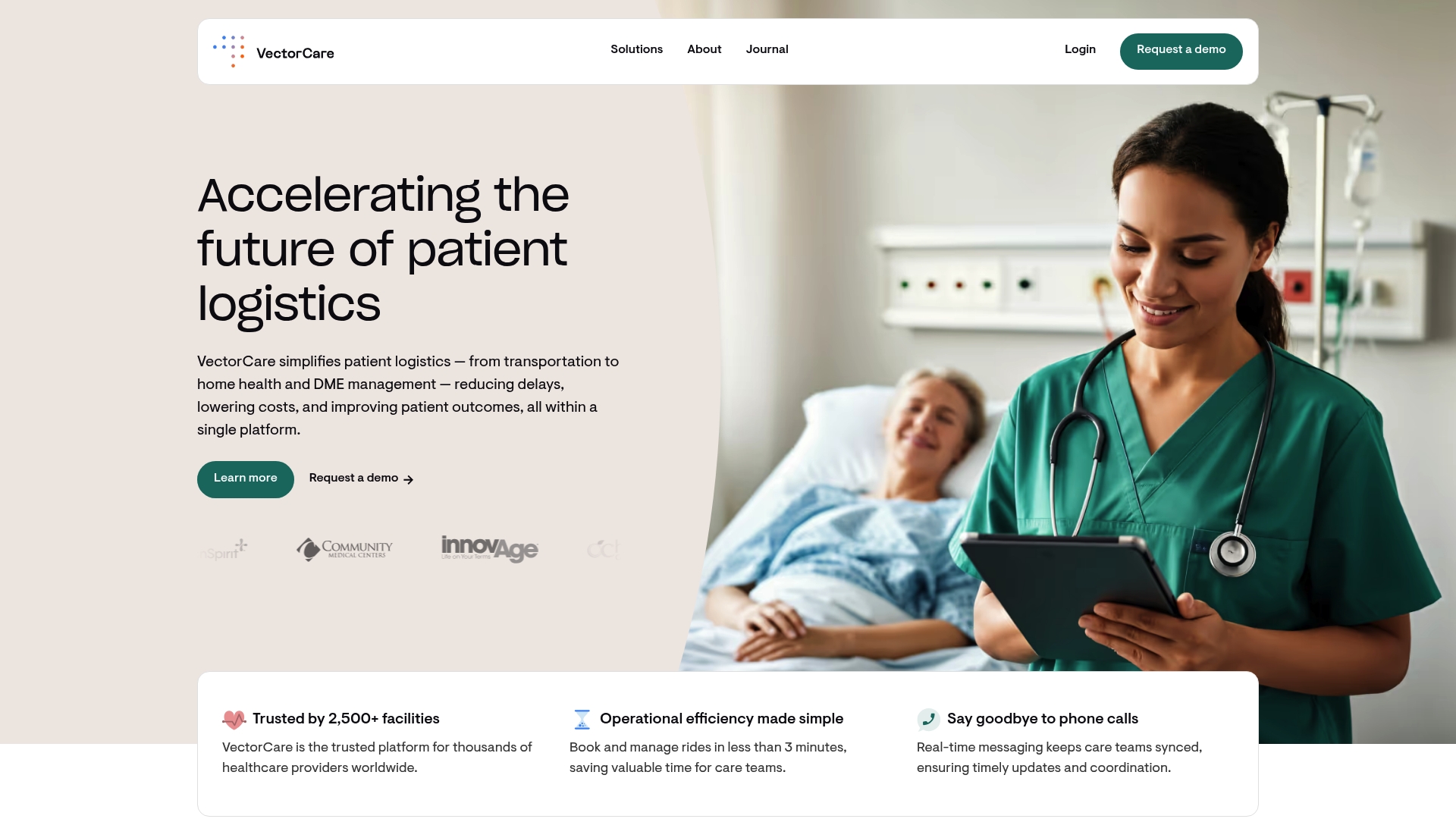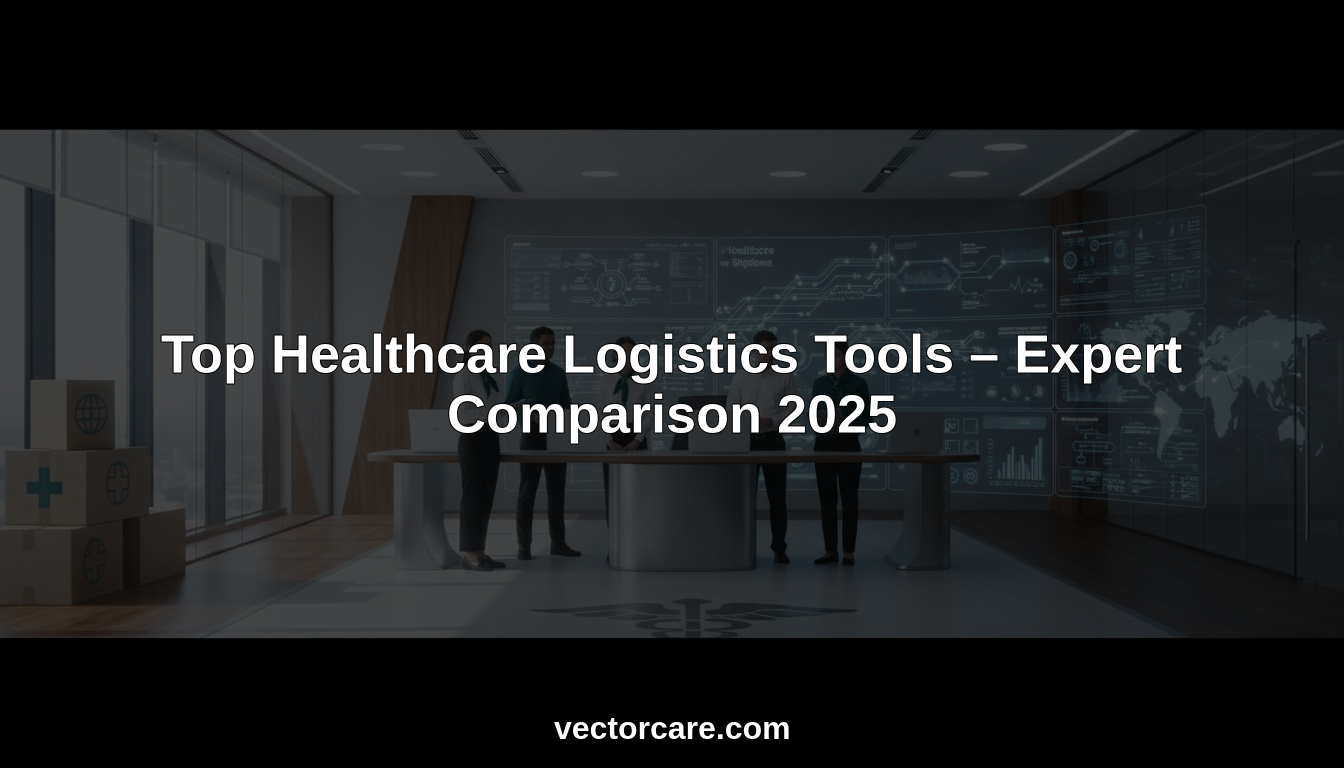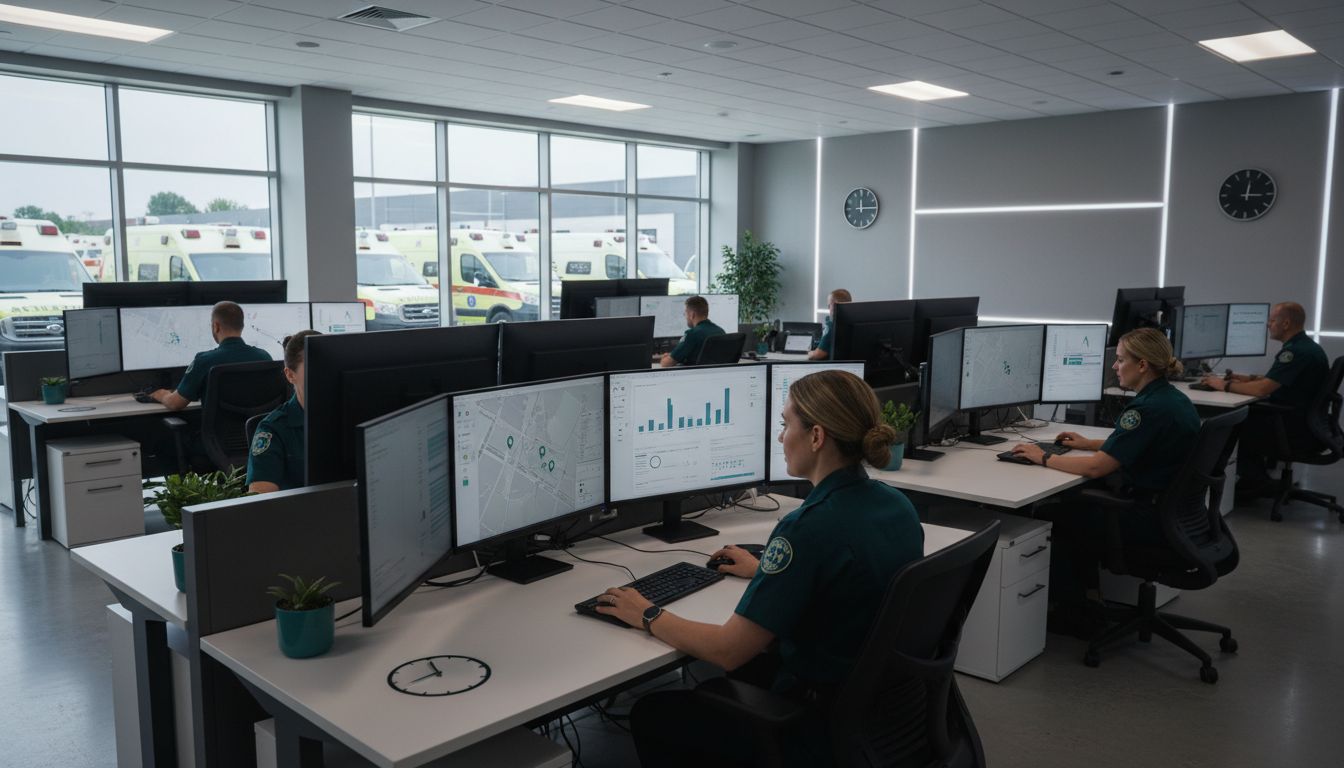7 Key Healthcare Cost Containment Strategies

Healthcare spending keeps climbing with the US alone expecting to hit over $6 trillion by 2028. Most people assume hospitals cut costs by slashing staff or services. Surprisingly, the most dramatic savings come from smarter strategies like analyzing resource use, embracing technology, and collaborating across teams. The results are not just lower bills but healthier patients and stronger healthcare systems.
Table of Contents
- Analyze And Optimize Resource Allocation
- Implement Telehealth Services Effectively
- Foster Preventive Care And Wellness Programs
- Negotiate Drug Prices With Suppliers
- Streamline Administrative Processes And Billing
- Utilize Data Analytics For Cost Monitoring
- Collaborate With Stakeholders For Better Outcomes
Quick Summary
| Takeaway | Explanation |
|---|---|
| Analyze Resource Utilization Regularly | Conduct audits on resource usage to identify inefficiencies. This allows healthcare organizations to make informed adjustments that improve financial sustainability. |
| Implement a Data-Driven Telehealth Strategy | Utilize data analytics for effective telehealth implementation, ensuring patient needs are met while controlling costs. Invest in digital platforms and training for optimal service delivery. |
| Foster Preventive Care Programs | Develop wellness initiatives that target chronic disease prevention and health management. This proactive approach can significantly reduce long-term healthcare costs. |
| Negotiate Drug Prices Strategically | Use thorough market research and collective purchasing power to negotiate drug prices effectively. This helps to minimize pharmaceutical expenses while ensuring access to necessary medications. |
| Streamline Administrative Processes | Optimize billing and documentation workflows using technology. Streamlining these processes can reduce costs and enhance resource allocation for direct patient care. |
1: Analyze and Optimize Resource Allocation
Healthcare organizations face significant financial challenges in managing resources effectively. Analyzing and optimizing resource allocation represents a critical healthcare cost containment strategy that can dramatically reduce operational expenses while maintaining high-quality patient care.
Resource allocation requires a comprehensive and data-driven approach. Healthcare providers must develop robust systems to track and evaluate how resources are currently being utilized across various departments and service lines. This involves conducting detailed assessments of staffing levels, medical equipment usage, supply chain management, and operational workflows.
Research from Health Affairs suggests that strategic resource optimization can lead to substantial cost savings. Key strategies for effective resource allocation include:
- Implementing advanced data analytics to identify inefficiencies
- Conducting regular performance audits of departmental resource utilization
- Developing predictive models for patient volume and service demand
Technology plays a crucial role in modern resource allocation strategies. Healthcare organizations can leverage electronic health record (EHR) systems and business intelligence tools to gain real-time insights into resource consumption. These technologies enable administrators to make informed decisions about staffing, equipment procurement, and service delivery.
Financial optimization also requires a holistic view of resource management. This means looking beyond immediate cost-cutting and focusing on long-term efficiency improvements. Providers should consider:
- Total cost of ownership for medical equipment
- Staff training and skill development programs
- Streamlining administrative processes
Successful resource allocation is not about reducing resources but strategically deploying them where they can generate the most value. By creating data-driven, flexible allocation models, healthcare organizations can improve patient outcomes while maintaining financial sustainability.
2: Implement Telehealth Services Effectively
Telehealth has emerged as a powerful strategy for healthcare organizations seeking to control costs while maintaining high-quality patient care. By leveraging digital communication technologies, healthcare providers can reduce operational expenses and improve patient access to medical services.
Research from the National Institutes of Health indicates that telehealth implementation requires careful strategic planning to achieve meaningful cost containment. Organizations must consider multiple factors when developing their telehealth approach.
Effective telehealth strategies focus on targeted service delivery and technological integration. Key considerations include:
- Selecting appropriate medical services suitable for remote consultation
- Investing in secure, user-friendly digital platforms
- Training healthcare professionals in telehealth best practices
Technology infrastructure plays a critical role in successful telehealth implementation. Healthcare organizations must develop robust digital systems that ensure patient privacy, seamless communication, and reliable connectivity. This involves selecting appropriate software platforms, establishing secure network protocols, and creating comprehensive digital workflow strategies.
Cost containment through telehealth is not just about reducing physical infrastructure expenses. It also encompasses improving overall healthcare delivery efficiency. Remote consultations can decrease patient transportation costs, minimize administrative overhead, and reduce unnecessary in-person medical visits.
Healthcare providers should also consider our guide on modernizing healthcare dispatching to further optimize their telehealth strategies. By integrating advanced dispatching technologies with telehealth services, organizations can create more responsive and cost-effective patient care models.
Successful telehealth implementation requires a comprehensive approach that balances technological innovation, patient needs, and financial considerations. Organizations must continuously evaluate and adapt their telehealth strategies to maximize cost containment while maintaining high-quality medical services.
3: Foster Preventive Care and Wellness Programs
Preventive care and wellness programs represent a powerful strategy for healthcare cost containment. By proactively addressing health risks and promoting early intervention, organizations can significantly reduce long-term medical expenses and improve patient outcomes.
Research from community hospitals in Texas demonstrates that comprehensive wellness initiatives can dramatically lower healthcare expenditures. These programs focus on preventing chronic diseases, managing existing health conditions, and empowering patients to take control of their health.
Effective wellness programs require a multifaceted approach that addresses various aspects of patient health. Key elements include:
- Comprehensive health screenings
- Personalized lifestyle management support
- Chronic disease prevention and management
- Mental health and stress reduction resources
Organizations must develop data-driven wellness strategies that leverage advanced health analytics and personalized interventions. This means moving beyond traditional one-size-fits-all approaches and creating targeted programs that address specific population health needs.
Financial incentives can play a crucial role in driving patient engagement. By offering reduced insurance premiums, wellness credits, or other motivational tools, healthcare providers can encourage more active participation in preventive care programs.
Technology integration is critical for modern wellness initiatives. Digital health platforms, wearable devices, and mobile applications can provide real-time health monitoring, personalized coaching, and actionable insights that support ongoing health management.
Employers and healthcare providers should collaborate to design comprehensive wellness programs that address both individual and population-level health risks. This approach not only reduces healthcare costs but also creates a culture of proactive health management.
By investing in preventive care and wellness programs, healthcare organizations can create a sustainable model that reduces expensive reactive treatments, minimizes chronic disease progression, and ultimately delivers significant cost savings while improving overall patient well-being.
4: Negotiate Drug Prices with Suppliers
Drug pricing represents a critical challenge in healthcare cost containment, with pharmaceutical expenses continuing to escalate at unprecedented rates. Healthcare organizations must develop sophisticated strategies to manage and negotiate drug prices effectively.
Research from the Congressional Budget Office indicates that strategic drug price negotiations can yield substantial financial benefits for healthcare systems. Negotiation is not just about reducing immediate costs but creating long-term sustainable pricing models.
Successful drug price negotiation requires a comprehensive approach that involves multiple strategic elements:
- Conducting thorough market research on drug pricing
- Leveraging collective purchasing power
- Developing transparent negotiation frameworks
- Establishing long-term supplier relationships
Healthcare organizations should focus on data-driven negotiation strategies. This involves collecting detailed information about drug pricing, understanding market dynamics, and identifying opportunities for cost reduction. Advanced analytics can help pinpoint areas where pricing negotiations can generate maximum impact.
Collaborative approaches are increasingly important in drug price negotiations. Healthcare systems can form purchasing consortiums, share negotiation strategies, and create collective bargaining platforms to increase their negotiating leverage with pharmaceutical suppliers.
Technology plays a crucial role in modern drug price negotiations. Digital platforms can provide real-time pricing intelligence, comparative analysis, and automated negotiation support. These tools enable healthcare organizations to make more informed decisions and develop more effective negotiation strategies.
Key negotiation tactics include:
- Exploring alternative drug formulations
- Considering generic medication options
- Implementing volume-based pricing agreements
- Developing risk-sharing contracts with pharmaceutical manufacturers
Successful drug price negotiations require a multidisciplinary approach involving procurement specialists, clinical experts, financial analysts, and legal professionals. By creating comprehensive negotiation strategies, healthcare organizations can effectively manage pharmaceutical costs while ensuring patient access to critical medications.
5: Streamline Administrative Processes and Billing
Administrative inefficiencies represent a significant financial drain in healthcare systems, consuming substantial resources that could otherwise be directed toward patient care. Streamlining administrative processes and billing workflows is a critical strategy for comprehensive healthcare cost containment.
Research from the National Center for Biotechnology Information demonstrates that reducing administrative complexity can yield substantial financial benefits for healthcare organizations. Technological integration and process redesign are key components of an effective administrative optimization strategy.
Healthcare organizations must focus on several critical areas to reduce administrative overhead:
- Implementing advanced electronic health record (EHR) systems
- Automating repetitive billing and documentation tasks
- Developing standardized documentation protocols
- Integrating artificial intelligence for claims processing
Digital transformation plays a crucial role in administrative streamlining. By leveraging sophisticated healthcare management technologies, organizations can significantly reduce manual processing time, minimize errors, and improve overall operational efficiency.
Our guide on how technology can empower healthcare professionals provides additional insights into technological solutions that can transform administrative workflows.
Effective billing process optimization requires a multifaceted approach. Key strategies include:
- Developing clear, transparent billing procedures
- Implementing real-time claims tracking systems
- Creating patient-friendly billing interfaces
- Establishing robust compliance and audit mechanisms
Cost containment through administrative process improvement is not merely about reducing expenses but about creating more efficient, patient-centered healthcare delivery systems. By eliminating redundant processes, reducing manual interventions, and leveraging advanced technologies, healthcare organizations can redirect resources toward direct patient care and critical medical services.
Successful administrative streamlining demands a comprehensive, technology-driven approach that balances operational efficiency with regulatory compliance and patient experience.
6: Utilize Data Analytics for Cost Monitoring
Data analytics has emerged as a transformative tool for healthcare organizations seeking to monitor and control escalating costs. By leveraging advanced analytical techniques, healthcare providers can gain unprecedented insights into their operational and financial performance.
Research from the National Institutes of Health highlights the critical role of data analytics in identifying opportunities for cost reduction. Comprehensive data analysis enables healthcare organizations to pinpoint inefficiencies, predict potential financial risks, and develop targeted cost containment strategies.
Key areas where data analytics can drive significant cost monitoring include:
- Tracking high-cost patient populations
- Identifying potential readmission risks
- Analyzing treatment optimization opportunities
- Monitoring supply chain and resource utilization
Technology plays a crucial role in transforming raw data into actionable insights. Advanced analytics platforms can integrate multiple data sources, including electronic health records, billing systems, and operational metrics, to create a holistic view of healthcare spending.
Our guide on creating end-to-end transparency provides additional context on how data visibility can drive operational efficiency.
Effective cost monitoring through data analytics requires a sophisticated approach that goes beyond simple number crunching. Healthcare organizations must develop:
- Robust data collection infrastructure
- Advanced predictive modeling capabilities
- Real-time performance dashboards
- Comprehensive reporting mechanisms
Predictive analytics represents a particularly powerful tool for cost containment. By analyzing historical data and identifying patterns, healthcare providers can anticipate potential cost drivers, implement proactive interventions, and optimize resource allocation.
The ultimate goal of data analytics in healthcare cost monitoring is not just to reduce expenses but to create a more efficient, patient-centered healthcare delivery system. By transforming complex data into meaningful insights, organizations can make informed decisions that balance financial sustainability with high-quality patient care.
7: Collaborate with Stakeholders for Better Outcomes
Effective healthcare cost containment requires a collaborative approach that brings together diverse stakeholders to develop comprehensive, strategic solutions. By fostering communication and alignment across different healthcare sectors, organizations can create more efficient and economically sustainable care delivery models.
Research from the Journal of the American College of Surgeons demonstrates that collaborative approaches can generate substantial financial benefits. Interdisciplinary collaboration enables healthcare organizations to identify and implement innovative cost-reduction strategies that individual departments might overlook.
Successful stakeholder collaboration involves engaging multiple key participants:
- Clinical leadership teams
- Supply chain management professionals
- Healthcare administrators
- Medical equipment providers
- Insurance and payer representatives
Technology plays a critical role in facilitating effective stakeholder communication. Digital platforms that enable real-time information sharing and collaborative decision-making can significantly enhance cost containment efforts.
Our guide on tools to improve patient outcomes provides additional insights into collaborative healthcare strategies.
Key strategies for effective stakeholder collaboration include:
- Establishing clear communication channels
- Developing shared performance metrics
- Creating transparent cost management protocols
- Implementing joint problem-solving approaches
Shared decision-making represents a powerful mechanism for cost containment. By involving physicians, patients, and administrative teams in collaborative discussions, healthcare organizations can develop more targeted, cost-effective care strategies that balance financial constraints with patient needs.
Ultimately, successful stakeholder collaboration is about creating a unified approach to healthcare delivery. By breaking down traditional organizational silos and fostering a culture of collective responsibility, healthcare systems can develop more innovative, efficient, and patient-centered cost management strategies.
The table below provides a comprehensive summary of the 7 key healthcare cost containment strategies discussed in the article, outlining their main focus, core actions, and resulting benefits.
| Strategy | Main Focus | Core Actions | Key Benefits |
|---|---|---|---|
| Analyze and Optimize Resource Allocation | Data-driven resource management | Audit usage, apply analytics, predict demand | Reduces waste, elevates efficiency, sustains quality |
| Implement Telehealth Services Effectively | Leveraging digital healthcare delivery | Targeted services, robust platforms, professional training | Cuts infrastructure costs, increases access |
| Foster Preventive Care and Wellness | Proactive health risk management | Health screenings, personalized support, incentive programs | Lowers long-term costs, improves outcomes |
| Negotiate Drug Prices with Suppliers | Strategic pharmaceutical spend control | Market research, collective bargaining, transparent negotiation | Minimizes drug costs, ensures medication access |
| Streamline Administrative Processes | Operational efficiency through technology | Automate billing, standardize documentation, process redesign | Cuts overhead, redirects resources to care |
| Utilize Data Analytics for Cost Monitoring | Cost control through informed decision-making | Data integration, predictive modeling, real-time dashboards | Identifies inefficiencies, prevents cost overruns |
| Collaborate with Stakeholders | Multi-party teamwork for sustainable care | Interdisciplinary teams, shared metrics, joint protocols | Enables innovation, improves overall efficiency |
Turn Cost Containment Strategies Into Real-World Savings With VectorCare
Healthcare leaders are under pressure to not only control spiraling costs but also streamline complicated logistics, resource allocation, and patient coordination. The challenges highlighted throughout this article — from eliminating administrative inefficiencies to improving data visibility and optimizing resource use — are issues our platform is designed to solve. Imagine accessing one automated, end-to-end solution that empowers your team to reduce delays, simplify dispatching, and make smarter financial decisions using real-time analytics.

Ready to move from theory to action? Discover how VectorCare’s digital platform delivers practical tools for scheduling, AI-driven dispatching, reporting, and secure communication. Explore our no-code solutions for healthcare professionals or learn how to achieve true end-to-end logistics visibility from our transparency guide. Act now to bring greater control, efficiency, and cost savings to your organization. Visit VectorCare and take your first step toward smarter healthcare operations.
Frequently Asked Questions
What are some effective strategies for optimizing resource allocation in healthcare?
Implementing advanced data analytics, conducting regular performance audits, and developing predictive models for patient volume and service demand can significantly enhance resource allocation in healthcare organizations.
How can telehealth services help in reducing healthcare costs?
Telehealth services can lower operational expenses by improving patient access to medical services, decreasing patient transportation costs, and minimizing unnecessary in-person visits, ultimately streamlining healthcare delivery.
What role do preventive care and wellness programs play in cost containment?
Preventive care and wellness programs help mitigate long-term medical expenses by proactively addressing health risks, promoting early intervention, and empowering patients to take charge of their health.
How can healthcare organizations effectively negotiate drug prices with suppliers?
Effective negotiation strategies include conducting thorough market research, leveraging collective purchasing power, and developing transparent negotiation frameworks with suppliers to achieve sustainable drug pricing.



